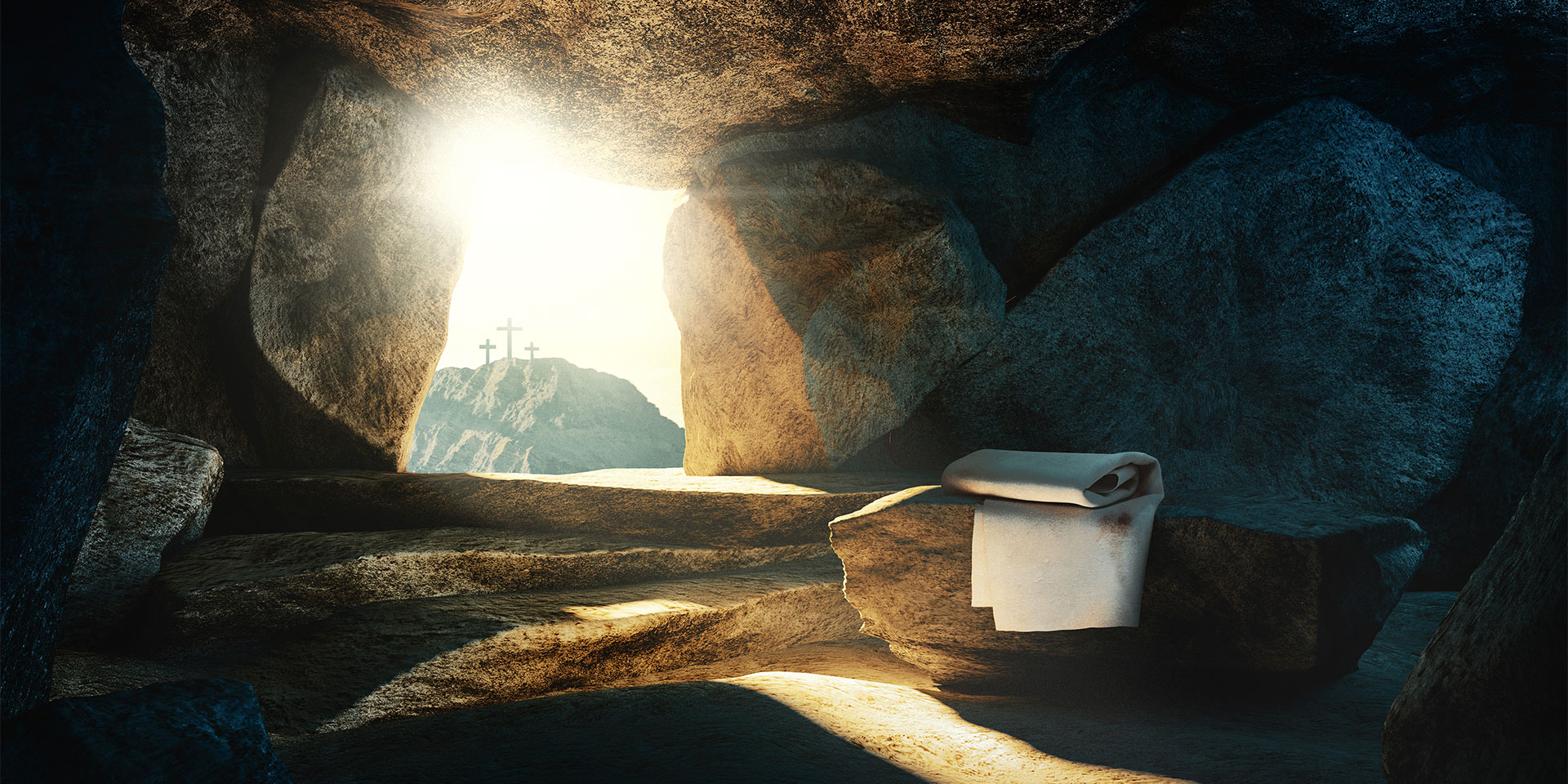No serious historian doubts that Jesus lived in first century Palestine and died by crucifixion. However, controversies arise when the resurrection is discussed.
Because it goes beyond the realm of what is natural, the resurrection is simply an unacceptable hypothesis for many Bible scholars. As such, their efforts focus exclusively on reconstructing the historical events that gave rise to the “legend” of the resurrection and on identifying the elements that made it play a primary role in the Christian tradition.
The a priori discrediting of the historicity of the resurrection naturally comes with a few corollaries: if Jesus did not rise, we cannot speak of a truly empty tomb, of real encounters with the risen Jesus, or of an ascension to heaven. All these early conclusions constitute the researchers’ assumptions about the life of Jesus.
Empty, wrong or undiscovered grave?
Particularly since the 19th century, various theories for demystifying the history of the empty tomb have gained popularity[1]. Most well-known theories claim either that Jesus did not actually die and that He somehow came out of the tomb, or that the disciples mistook another tomb for His because they did not know exactly where Jesus had been buried, or that Jesus’ body was not even buried, but eaten by wild animals.
What is worth noting at this point is that all these different explanations of Jesus’ resurrection take the event of the crucifixion seriously, implicitly accepting its historicity.
In addition, they seriously consider the apostles’ conviction that Jesus was resurrected—recognizing that this conviction was so remarkable that we must seek to understand what might have generated it. Having more information on Jewish perceptions and practices regarding death and burial[2] will prove to be profoundly useful in evaluating these theories.
Following a millennial tradition, the first century Jews regarded burial as a sacred duty of the living both to the dead and to the country (according to the Hebrew Scriptures, the unburied corpse defiled the land; see Deuteronomy 21:22-23; Ezekiel 39:14, 16). The body of the deceased was washed, perfumed and wrapped in textiles, and the burial took place on the day of death or the next day, at the latest, if death occurred in the evening or at night. The day of the funeral was the first of a seven-day period in which mourners went to the grave and often entered it (it’s easy to understand why the perfumes used to anoint the dead body and those brought to the grave were so important). The last stage of this process took place about a year after the funeral, when the bones were placed in an ossuary in the family grave[3], the final destination of the deceased.
Jews sentenced to death were not buried in an honourable place (such as the family tomb), but they were not denied burial either[4], although Roman practice provided that the bodies of the crucified should not be buried. Moreover, in the case of those convicted by the Sanhedrin, the governing body assumed responsibility for their burial. This probably also explains why Joseph of Arimathea, who was a member of the Sanhedrin, was given permission to tend to the funeral of Jesus. Under these circumstances, the theory of the wrong grave proves incomplete, because it fails to explain how the Jewish authorities responsible for Jesus’ burial[5] and interested in stopping the rumour of His resurrection, were not able to find the true tomb of Jesus and His dead body. What is more, in the case of those sentenced to death, it was a common practice to dispose of their bones in an ossuary.[6] Together, these historical arguments make the hypothesis that the body of Jesus would have remained unburied and could have been eaten by animals extremely unrealistic.
The idea that Jesus could have survived the crucifixion is also unlikely, given that the Romans ensured the death of the condemned before leaving the place of execution. Moreover, had Jesus survived all His wounds, it is very difficult to imagine that He would have lived a whole number of decades in complete anonymity before being buried without anyone mentioning anything about it. It would also have been extremely unlikely that His disciples would have so passionately proclaimed His resurrection for decades, while Jesus Himself would have been hidden somewhere, refusing to continue what had begun before the crucifixion.
Encountering Jesus: hallucinations, visions or expressions of faith?
Whereas Jesus’ death and burial are, according to the previous arguments, indisputable historical events, a massive debate focuses on His resurrection. Was such a proclamation of Jesus’ disciples foreseeable? Was it easy to invent and sustain in the Jewish world of the first century? Logic says no, for a number of reasons.
First, because Jesus’s death, although announced by Jesus Himself, was obviously not anticipated by His disciples—it came as a shock. Unlike today, during the first century, the cross was a terrible symbol of a shameful death and the condemnation that had brought it. Of all the calamities that might have befallen Jesus’ disciples, the crucifixion of their Master was the greatest. It was a complete and deeply demoralizing discrediting of everything they had built with Jesus over three and a half years. That is why the probability that the disciples had the impulse and ability to invent and manage the resurrection, and the inner resources to appear in public, without shame, with such a triumphant message, is close to zero.
Beyond probabilistic calculations, however, such a level of generalized imposture, perfectly efficient and impeccably assumed by the group of disciples, is practically impossible.
Then, in order to explain the resurrection, while denying its reality, there is also a narrative stating that the disciples’ post-Golgotha meetings with Jesus were individual and collectively congruent hallucinations. In other words, the disciples suffered, individually or in groups, from mental disorders that affected their sensory perceptions so that they would see Jesus, even though He was not there. Such a series of hallucinations would be truly remarkable. But it is also unbelievable when we consider the long list of meetings with Jesus that the early Christian tradition, as recalled by Paul in 1 Corinthians 15:3-8, has preserved from the disciples’ testimonies.
People with completely different profiles, with different temperaments, levels of education and social positions would have hallucinated about Jesus, and everyone else would have also found their testimonies to be consistent and credible. At the same time, these hallucinations would have been completely out of the ordinary, judging by the high number of incidents in which Jesus was physically present when meeting with the disciples after the resurrection—for example, all the disciples should have had, at the same time, the same erroneous feeling that the risen Jesus is the one who prepared and offered them fish and bread by the sea, and the disciples at Emmaus would have had to walk on the road, talk for several hours, and then eat with an illusion. It is also very difficult to accept that all these things could have happened in a collective vision.
Historical events or mere projections of faith in Jesus?
Modern theology has also offered a theory of the history behind the resurrection, namely the suggestion that the Jesus that Christians venerate is completely different from the historical Jesus. The Christian tradition would have transformed, over time, the moral teacher of Nazareth into the pre-existing, eternal, incarnate, dead and risen Son of God, ascended to heaven—a Jesus of faith, born over decades and centuries of Christian tradition.
However, Paul, a Pharisee of the most perfectionist sort, a scribe with a strong will and an exceptional determination, describes Jesus about 20 years after His death, just as we know Him today. And Paul’s historical testimony is all the more credible as he was initially so irritated by the idea of Jesus’ resurrection that he fought directly against the “Way” (followers of Christ—Acts 24:14). On the road to Damascus, however, Paul had a close encounter with Jesus (Acts 9; 1 Corinthians 9), which changed his life and which he sought to share with anyone who would listen, even Caesar of Rome, although he knew full well that the gospel he was preaching was considered utter madness to the inhabitants of the empire. In light of his life and reputation, Paul, a respectable intellectual in every circle of that time, became the most convincing eyewitness[7] which we have for the risen Jesus.
The list is open
Arguments in favour of the credibility of Jesus’ resurrection can still be added. The fact that the Gospels present women as the first eyewitnesses of the resurrection, in a world where the testimony of a woman was not admitted in court, is another strong indication of the historicity of the resurrection. After all, why would anyone invent a story in which the first witnesses are the least credible in the eyes of those they want to convince?
Then, if one had orchestrated this diversion of the resurrection of Jesus so carefully that no one would be able to dismantle it either today or later, it would be difficult to explain the differences between the accounts of the resurrection in the four gospels.
The inconsistencies between the circulated versions of false news have the capacity to undermine the credibility of a testimony, and the lack of appetite of Christians to harmonize the content of the gospels is an argument against the mystification of the real history of the resurrection of Jesus. On the other hand, if the evangelists’ reports were not motivated by an attempt to make a credible lie, then it is easy to understand that each of them focused on aspects that they considered most relevant and beneficial to their recipients.
In fact, they were essentially focused on transmitting the great news of salvation through Jesus Christ. And the fact that the enthusiasm and faith of those who saw the risen Jesus never diminished as time passed without Jesus returning is the strongest evidence of the effect of Jesus’ resurrection on its witnesses. They could accept that they were wrong about anything else, but they knew they were not wrong about the resurrection. Jesus had promised to rise and He rose indeed! That is why they knew that any other promise made by Jesus would be fulfilled.
This way, evangelists and apostles became the symbol of a church that, based on the certainty of Jesus’ resurrection, fixed its eyes on heaven awaiting the return of Jesus. This image certainly deserves our attention—it may very well be the most accurately essentialized picture of the church that God imagines!
Norel Iacob is the editor-in-chief of Signs of the Times and ST Network.


















